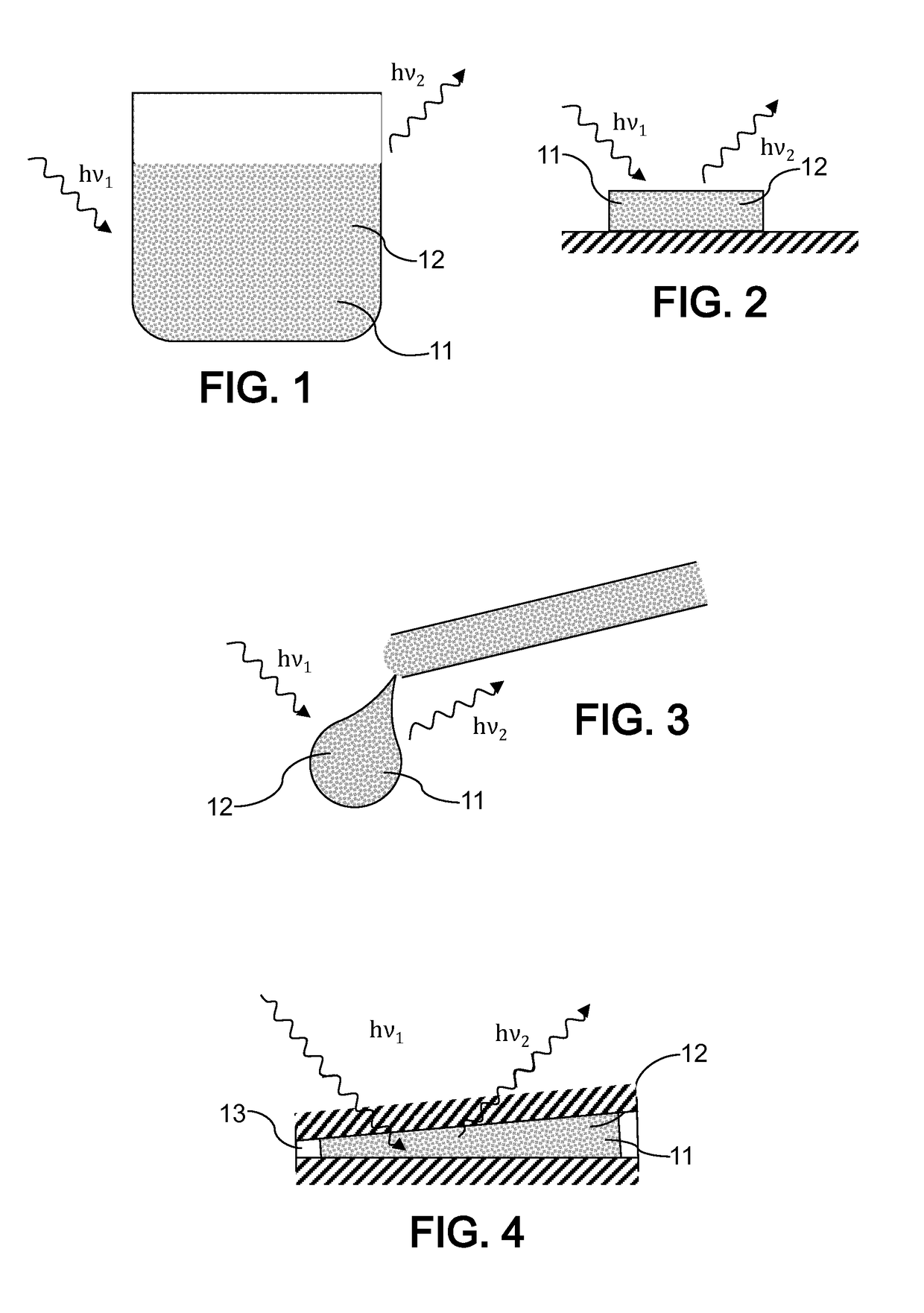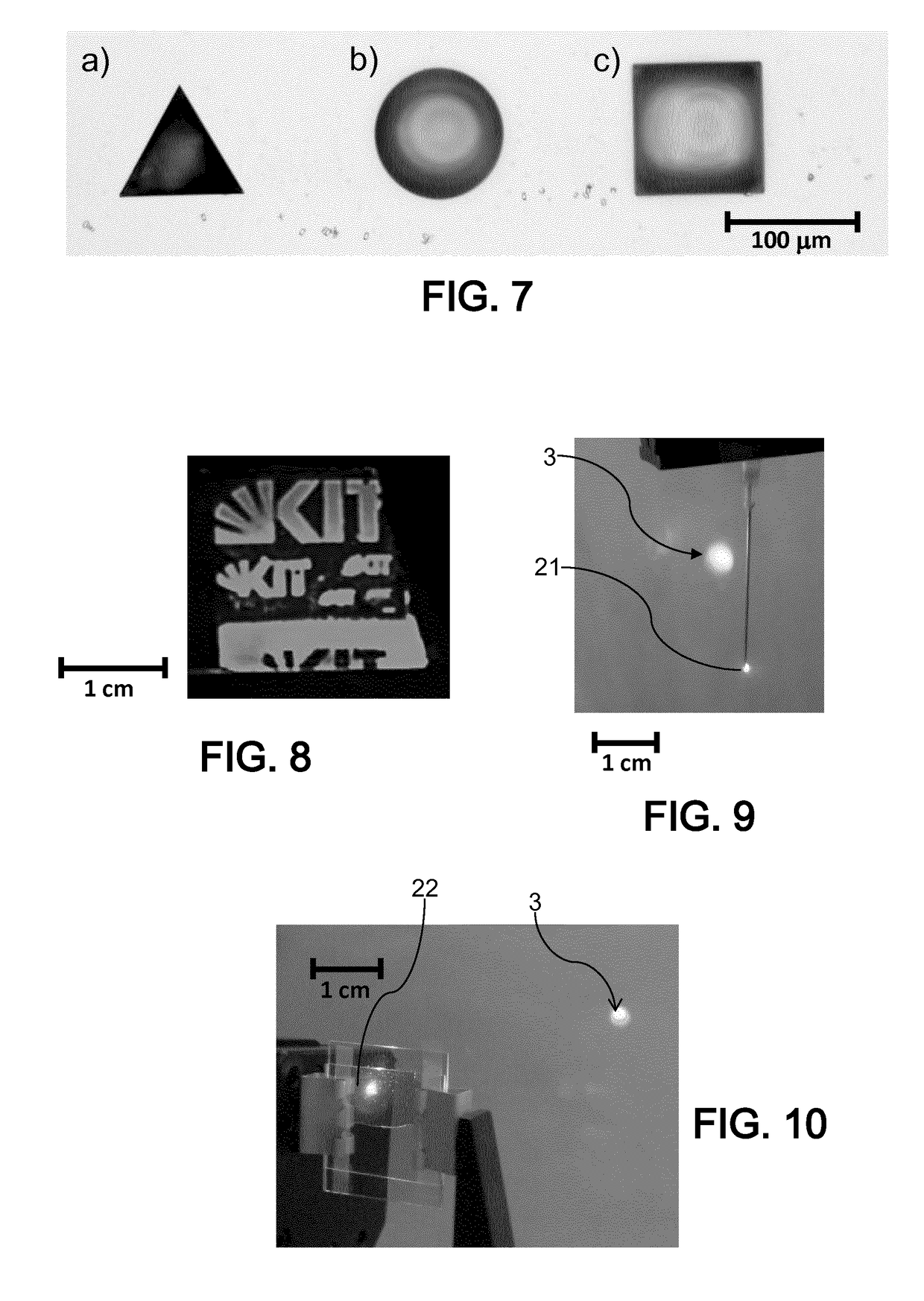Random Lasing Photo-Curable Composition for Use as Random Lasing Gain Medium
a technology of photocurable composition and random laser, which is applied in the field of random laser, can solve the problems of high price and fragility, complicated and expensive resonating system, and physical mechanisms occurring during random laser emission that are not fully understood today and are still under investigation. , to achieve the effect of affordabl
- Summary
- Abstract
- Description
- Claims
- Application Information
AI Technical Summary
Benefits of technology
Problems solved by technology
Method used
Image
Examples
Embodiment Construction
[0130]A random lasing photo-curable composition was obtained by mixing laser dye PM597 of Exciton and optical glues NOA81, or NOA61, or NOA 68 of Thorlabs, which are representative of NOA, so that the laser dye makes up 0.5 wt. % of the composition.
[0131]Wedge cells were made from two 0.15 mm or 1 mm thick microscope glass plates separated by DuPont Mylar spacers with a thickness of 100 μm at one edge and 23 μm at the other one and closed at the sides by means of metallic clips or glue.
[0132]The wedge cells were either capillarily filled with the random lasing photo-curable composition after formation thereof or by depositing a droplet of the random lasing photo-curable composition on one of the plate and then applying pressure onto the droplet through the other plate during fabrication of the wedge cells.
[0133]Thus liquid gain media have been obtained.
[0134]The gain media was optically pumped by means of a pump laser system comprising a pulsed Nd:YAG laser (frequency of 10 Hz, puls...
PUM
| Property | Measurement | Unit |
|---|---|---|
| wt. % | aaaaa | aaaaa |
| inner diameter | aaaaa | aaaaa |
| wt. % | aaaaa | aaaaa |
Abstract
Description
Claims
Application Information
 Login to View More
Login to View More - R&D
- Intellectual Property
- Life Sciences
- Materials
- Tech Scout
- Unparalleled Data Quality
- Higher Quality Content
- 60% Fewer Hallucinations
Browse by: Latest US Patents, China's latest patents, Technical Efficacy Thesaurus, Application Domain, Technology Topic, Popular Technical Reports.
© 2025 PatSnap. All rights reserved.Legal|Privacy policy|Modern Slavery Act Transparency Statement|Sitemap|About US| Contact US: help@patsnap.com



